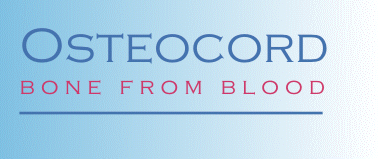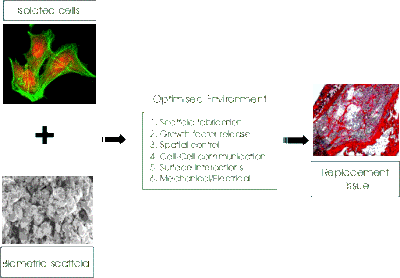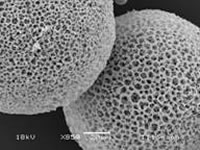A European Union 6th Framework funded project with €2.5 million funding over 3 years |
Tissue Engineering Bone
Tissue engineering aims to create biological substitutes that can repair or replace diseased or damaged tissues. It has the potential to revolutionise the treatment of a variety of human conditions. For example, the human skeleton has some ability to repair itself after physical trauma however; this natural regeneration may be limited in certain conditions. As a result, 1 to 2 million bone grafts are required each year in order to regenerate tissue lost through cancer, osteoporosis or injury. At present, autologous grafting (which requires a painful secondary operation to acquire fresh bone) or allogeneic grafting (which takes bone from other sources and therefore presents potential compatibility issues) are typically used to repair damage. Furthermore, the progression of bone disease states such as osteoporosis are merely slowed by conventional pharmaceuticals. The emergence of regenerative orthobiologicals and tissue engineering methods will address the limitations of these existing treatments.
A key concept in regenerative medicine is the provision of an artificial 'scaffold' material that creates an optimised environment for tissue formation (see diagram below). Using these constructs, individual cells can be encouraged to organise into tissues by precisely controlling the environment in which the cells are cultured. In addition to providing the correct signalling cues to stimulate tissue growth, the scaffold is designed to provide a large surface area for cell attachment and efficient gas/nutrient exchange, permit the infiltration of a vascular network, and define the resultant three-dimensional structure of the tissue. Variations on this approach are currently being tailored for the regeneration of virtually every tissue in the body.
© RegenTec Ltd
Click on the image for a larger version


